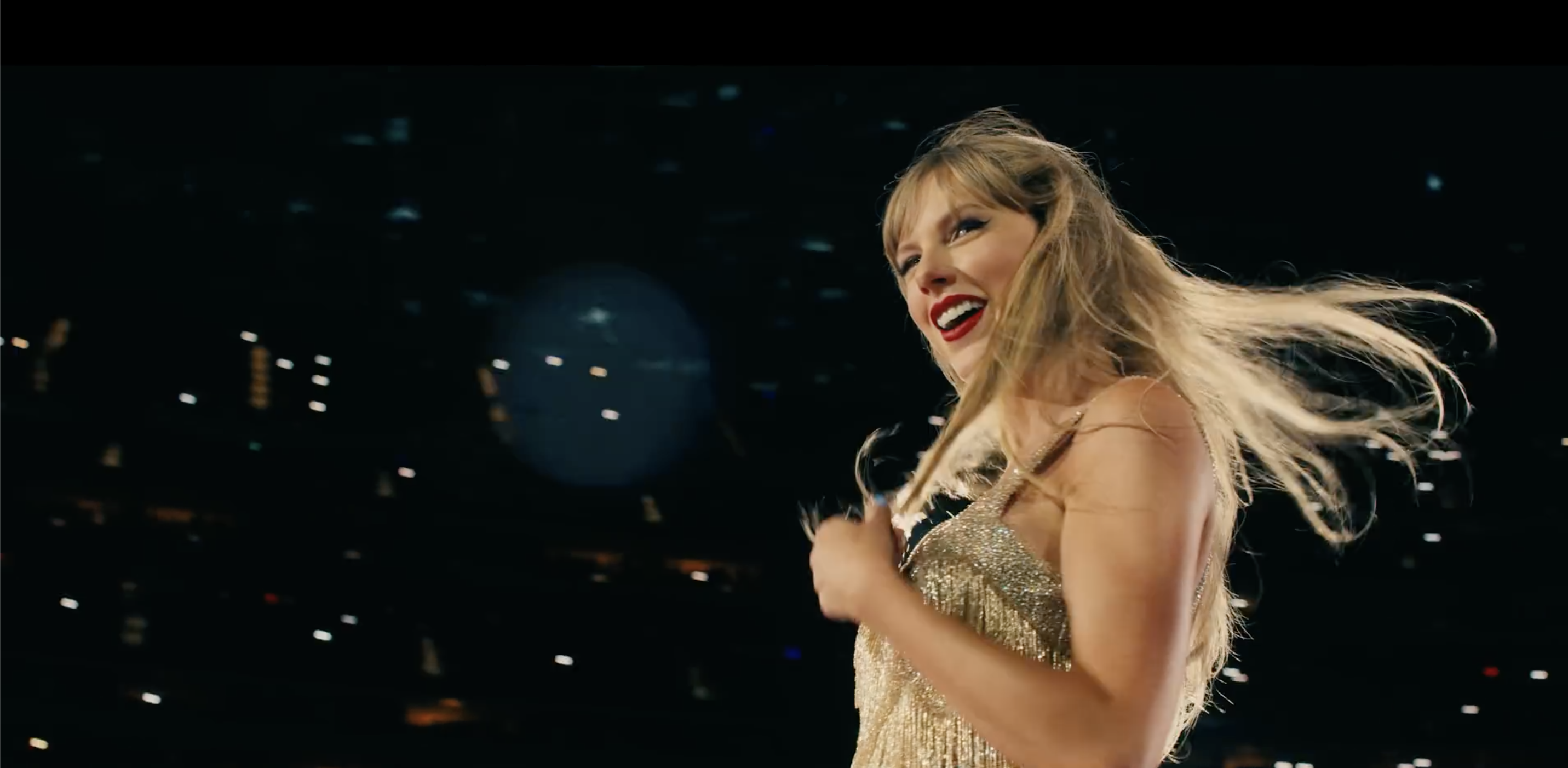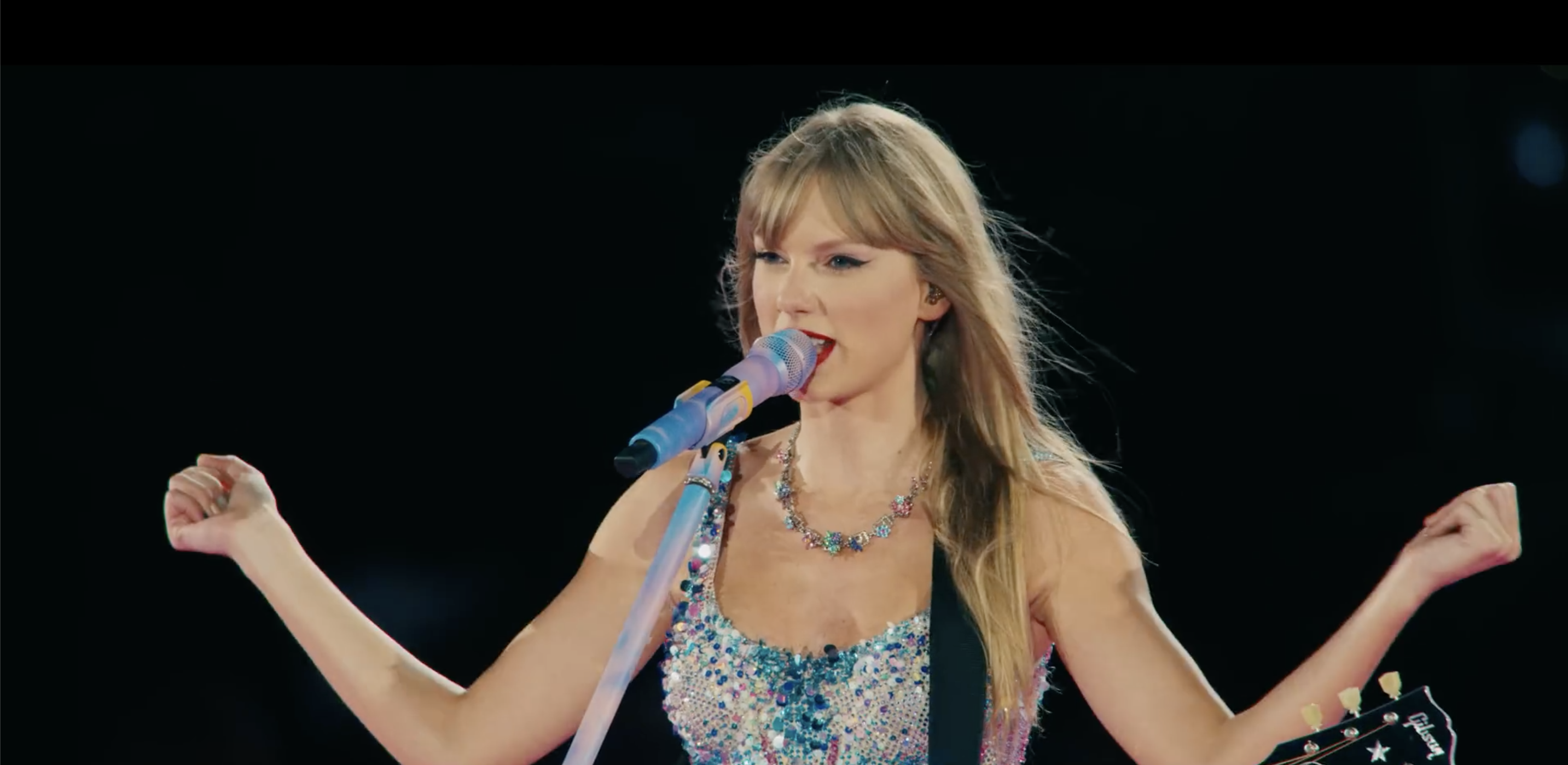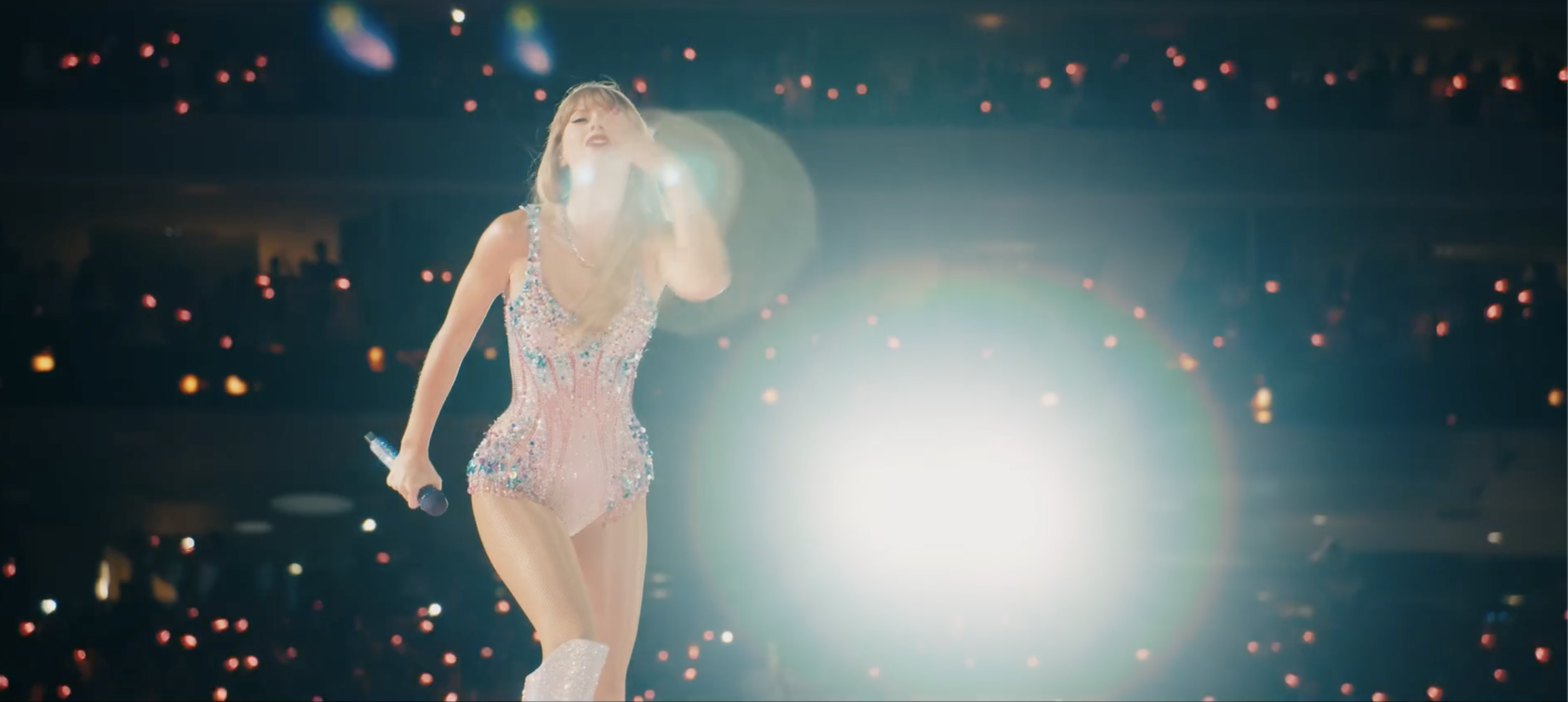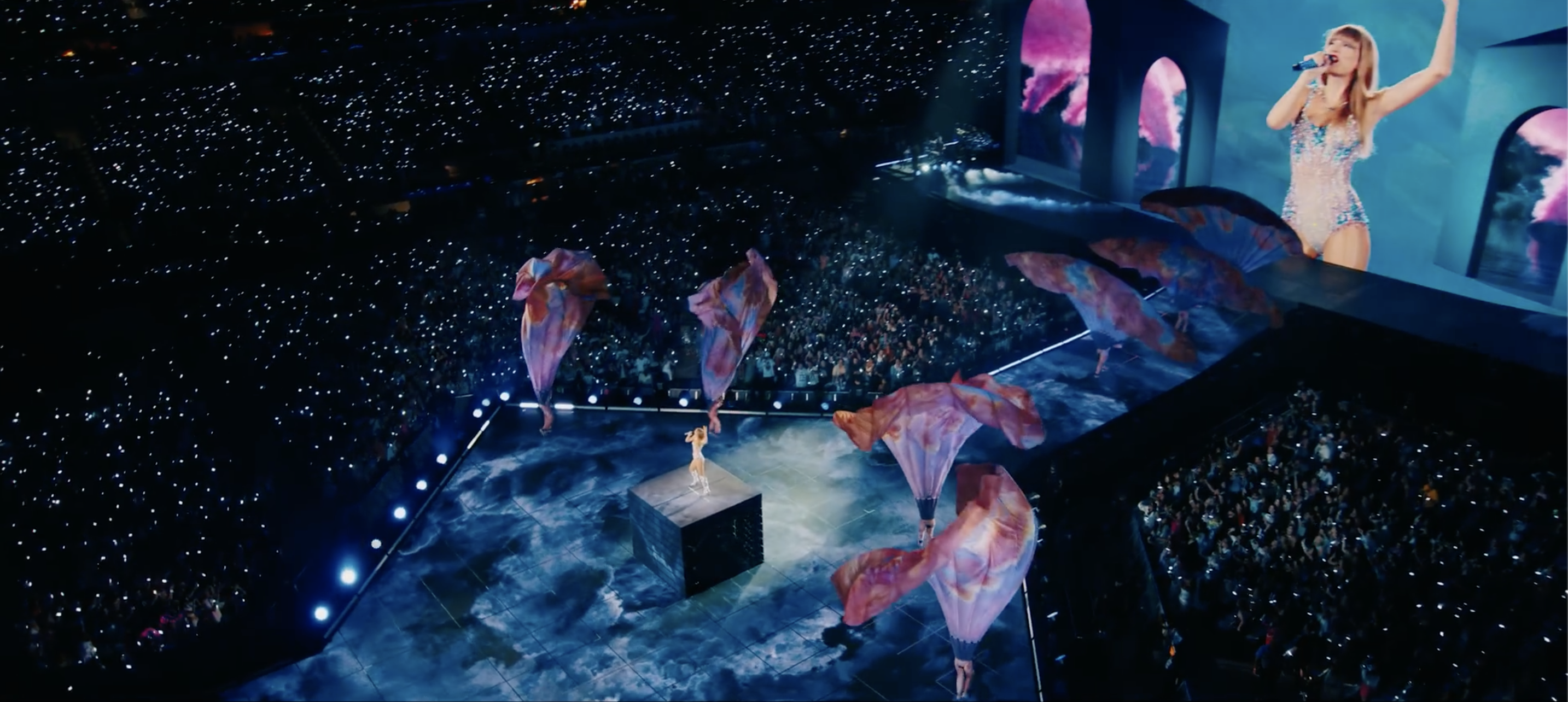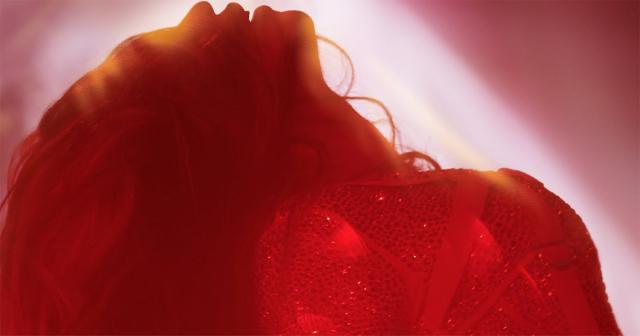
TL;DR
- Taylor Swift’s “The Eras Tour” is a nearly three hour concert film that’s receiving both critical acclaim and big box office dollars.
- The studios are reportedly less than pleased about the distribution deal Swift struck with AMC Theatres. (Some might even say there’s a likelihood of bad blood between Swift and the studios…)
- Concert films must strike a balance between recreating the concert-going experience and improving upon it, giving attendees the sense that they both had the best seat in the house and an additive, cinematic experience.
Taylor Swift is “passing a $100 million screen test,” Variety’s Chris Willman concludes just days after the “The Eras Tour” movie was released in theaters.
Willman says Swift’s performance in the concert film is “2 hours and 45 minutes of nearly nonstop acting, writ large for the back row of SoFi Stadium and, now, Imax and Dolby.”
The concert film “will be playing AMC, Regal and Cinemark theaters this fall. AMC also is releasing Taylor Swift: The Eras Tour on its own in what is a first distribution initiative for the circuit, however, it has tapped Variance Films to book the title. The pic will also be booked at Cineplex theatres in Canada and Cineopolis in Mexico,” according to Deadline.
Swift’s film “set a single-day domestic record for AMC after selling $26 million in less than 24 hours, besting the all-time benchmark previously held by “Spider-Man: No Way Home” ($16.9 million),“ Variety reports.
“The world’s biggest music star teaming with the world’s biggest theater company on a film that could play for months is as close to a no-brainer as exists in entertainment,” Puck’s Matthew Belloni writes about the AMC deal. (Also a no-brainer, Belloni reports, was Universal’s decision, under duress, to change “The Exorcist: Believer’s” release date from the targeted Friday the 13th that would have competed directly with Swift’s movie.)
“For traditional studios, ‘The Eras Tour’ might be the most profound example of the money that’s been left on the table because of dragged-out negotiations with the Writers Guild of America and the Screen Actors Guild,” David Sims writes in The Atlantic.
Slashfilm’s Hannah Shaw-Williams writes, “This is a power move, and studios are reportedly angry about it.”
But movie theaters and fans certainly aren’t.
“Perhaps it feels like a stretch to claim that concert films will be what saves cinema, but with Hollywood running on fumes, it’s much more possible for their movies to have an impact—or at least for the large impact they would have no matter what to seem like the only thing happening at the multiplex,” writes Wired’s Angela Watercutter. “And not for nothing, but finance types are literally out here claiming these two artists [Taylor Swift and Beyoncé] boosted the US gross domestic product in the third quarter of this year.”
The Making of an “Eras” Experience
The creators behind the film deserve massive praise.
Willman writes, “A team of five editors gets credit for assembling all this work in such a hurry following a shoot at her U.S. tour finale in L.A. just two months ago. But the movie reflects the ethos Wrench has showed off in other concert films, like the recent ‘Billie Eilish Live at the O2,’ in not cutting just to create excitement where it already exists.”
In terms of the visuals, Willman observes, “A healthy balance is struck between knowing there’s a hell of a lot to take in in this stage production and knowing that the thing we most want to take in is Swift herself.”
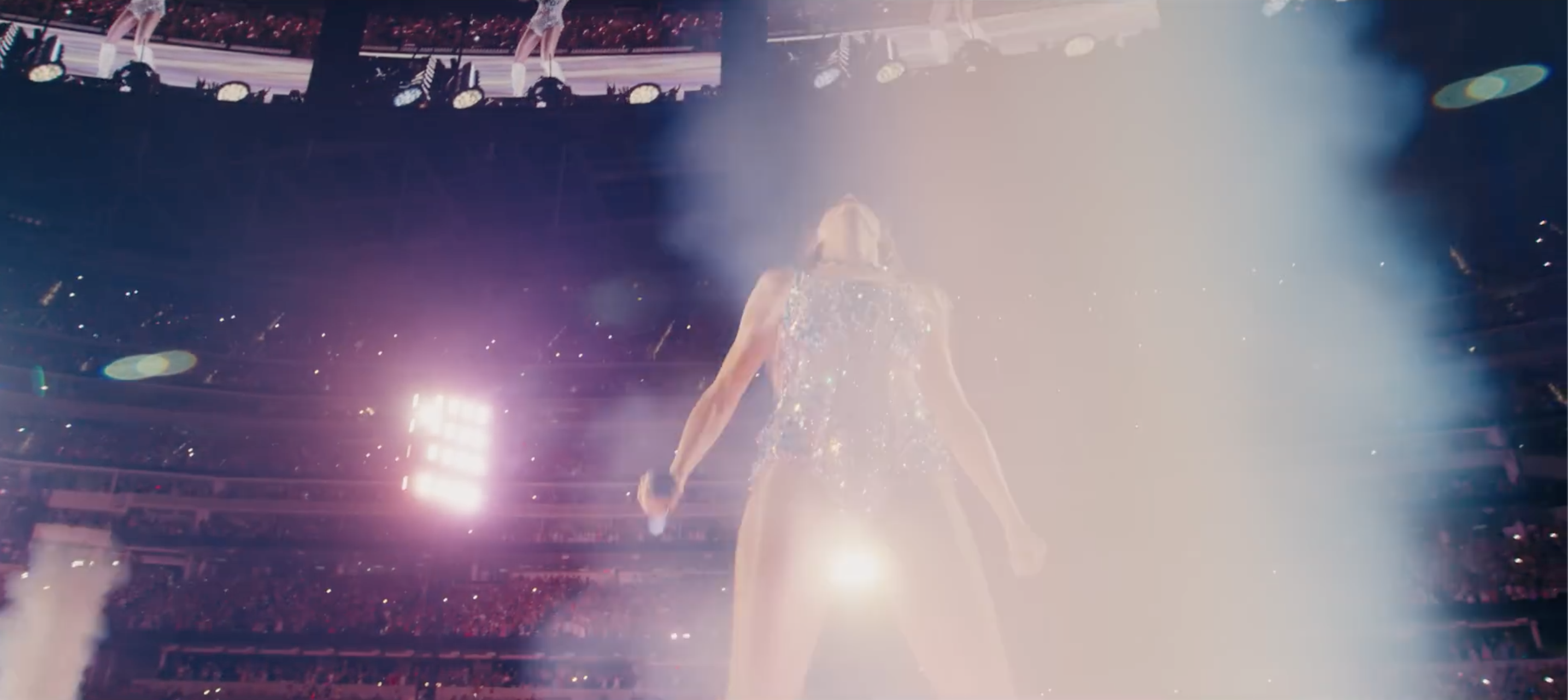
READ MORE: Taylor Swift’s ‘Eras Tour’ Is as Exhilarating on Screen as in the Flesh: Film Review (Variety)
Swift herself gave the creators an enthusiastic cosign during the surprise early premieres at AMC Theaters in the Grove on Thursday. THR’s Kristen Chuba reports that Swift told audiences, “It is the perfect capture of what this show was like for me.”
She also told attendees, “I think that you’ll see that you’re absolutely a main character in the film, because it was your magic and your attention to detail and your sense of humor and the ways that you lean into what I’m doing and the music I create.”
READ MORE: Taylor Swift’s ‘Eras Tour’ Premiere: Superstar Says Concert Film Is “The Perfect Capture of What This Show Was Like for Me” (The Hollywood Reporter)
Per Calum Marsh at the New York Times, “Filmed over three nights in August at SoFi Stadium in Inglewood, Calif., and directed by Sam Wrench, ‘The Eras Tour,’ like most concert films, aims to capture some of the magic of seeing the artist perform live.”
Despite this very tough assignment, “Apart from maybe those digital title superimpositions, you’d be hard-pressed to point to any wrong moves Wrench makes in transferring the show from stage to screen,” Willam writes. He’s unconvinced that the announcements of the different eras (AKA albums) was truly additive for most viewers.
“The demands of a film are incredibly complicated, and faithfully reproducing the look and sound of a concert for the screen is an arduous and painstaking process for the filmmakers and their crews,” writes Calum Marsh.
“You can make [the concert film] an equally good experience, but it has to be a filmic or cinematic experience rather than trying to compete with the live experience,” film and music video director Jonas Akerlund told Marsh.
Akerlund explained that time and money and opportunity are the secret to making a concert film cinematic, followed by editing “with the precision of a four-minute music video.”
Part of that is ensuring the audio is superb — maybe even better than it was live. “The main thing we’re trying to do is provide the theatrical audience with the best seat in the house,” John Ross, the rerecording mixer on “The Eras Tour,” explains.
Variety’s Willman argues that the film achieves this: It “magnifies all of it, in a next-best-thing-to-being-there way (even though no one who missed it will completely shed their FOMO).”
To achieve this, Marsh says, “the tone of the room is essentially applied like a filter to the raw sounds recorded from the artist onstage. This filter, known as impulse response, takes readings from actual physical places, then ‘synthetically reproduces the sound of a real space like a club or stadium,’ said Jake Davis, the lead mix engineer at SeisMic Sound, an audio facility in Nashville that specializes in concert films.”
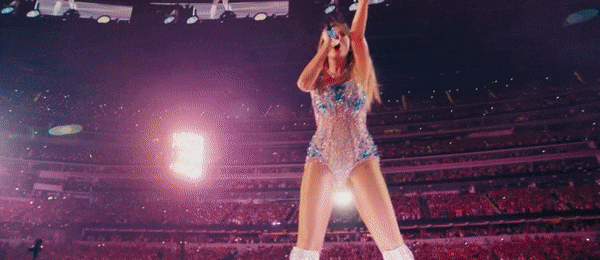
Mixers are also tasked with making “ the concert film sound more like what the artist wanted than what necessarily occurred on the night it was filmed,” Marsh says.
Precision – but not perfection – is the name of the game for concert films. Marsh writes, “It’s a bit like touching up a portrait in Photoshop: it’s tempting to clear blemishes, but too much airbrushing can make you look fake.”
Despite all of the behind-the-scenes effort, Marsh writes, “The best concert films will, to the unwitting viewer, seem like nothing more than filmed concerts — the filmmaking itself remains invisible.”


